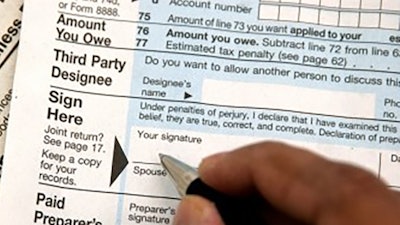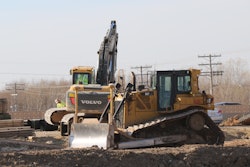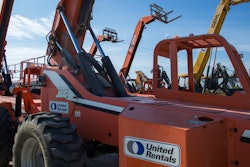
I planned to continue the own vs. rent commentary this month, but since President Biden’s proposed tax bill was released, I believe now is the time to discuss the changes so you have time to plan out the rest of this tax year, as well as 2022 and 2023. While I believe the cost vs. own review is important for 2021 and 2022, we will get back to that in the near future.
To keep you from chasing around trying to find the tax proposals, you can access to a review of the bill that covers just about everything you need to know about the changes. It was compiled by Steve Pierson, CPA at Seldon Fox, who has been working with me at least 20 years and specializes in the issues I normally come across with dealers, rental companies and contractors. He can deal with just about any tax issue that comes up, especially those related to equipment and other types of depreciable assets.
What you will find in the memo is a discussion about how Bonus Depreciation and Sec 179 will change and the impact to expect for 2022-27. Bonus Depreciation will be phased out by 20% per year starting with 2023, going from 100% deduction to 80% deduction and so on. In other words, the tax benefits related to new and used equipment purchases will decline and thus raise taxable income compared to what you can do today.
This change in the deprecation deduction increases your risk of higher tax bills and thus a use of cash you were able to avoid with the 100% Bonus deduction. This new risk is a result of owning assets with a zero tax basis (the cost was deducted) which, when you sell them, will be 100% taxable at the new proposed higher income tax rate. Up to this point, many contractors were able to mitigate this tax issue because they had Bonus Depreciation to cover taxable profits.
Read the review for more information.
Take Advantage of Tax Deferrals
Also of major importance for 2020 and 2021 are government programs that are not discussed very often but are able to provide major tax deferrals as well as dollars from the government similar to the PPP loan programs. They include the Employee Retention Credit (ERC) and Cash Basis accounting available for contractors. (Steve is also quite conversant about these topics in case help is needed.)
If you qualify for the ERC, you can receive a refund of a percentage of the employment taxes paid for each quarter in 2020-2021. In order to qualify for 2020, your total sales for the quarter had to be 50% less than the same quarter in 2019, which was a little tough to do. But with a change to 20% for 2021, your chances of having a positive outcome increase when comparing each quarter of 2021 against the same quarters of 2019.
For 2020, the max credit per employee under the ERC was $5,000. For 2021, it is $7,000 per employee. If you have 100 or fewer employees, all wages are eligible. ERC is taxable but the overall result is still very positive. Steve’s partner Paul Rozek knows this area very well and can help guide you through the process.
Cash Basis accounting really helps conserve cash because taxable income is based on funds received vs. accrued income where your funds are sitting in accounts receivable (AR). So, if you have a good year and wind up with a significant AR balance, you could wind up straining cash because collections are slow. On the other hand, if your AR and work in progress (WIP) go down, you may have a higher taxable income on a Cash Basis compared to what it would have been on the accrual basis. In short, Cash Basis accounting is a deferral of tax due that could reverse if AR and WIP balances fall compared to the prior tax year.
Both of these tax-related concepts should be reviewed as a way to build cash and reserves to mitigate any pandemic or economic pitfalls that may come your way.
Review Your Tax Position
Steve, Paul and I and our colleagues make it a point to meet in the fall with clients to review the tax planning from the prior year and how that turned out, and then estimate the tax position for the current year and the related tax requirement. This gives us three to four months to work out ways to reduce the tax burden.
This takes a little work but keeps management informed about both former and current tax planning results. Management then knows what to expect for a tax liability and can gather the cash to cover the amount due.
There is one other tax program I want to review with you, as well, and will do that next month. These topics will also be covered at the Ignite Construction Summit program next month.
Interested in learning more on financials? Attend the Ignite Construction Summit — the construction industry’s only conference and networking event for construction business owners and high-level managers — November 3 to 5, 2021, to hear from Garry Bartecki on these issues and more!



















